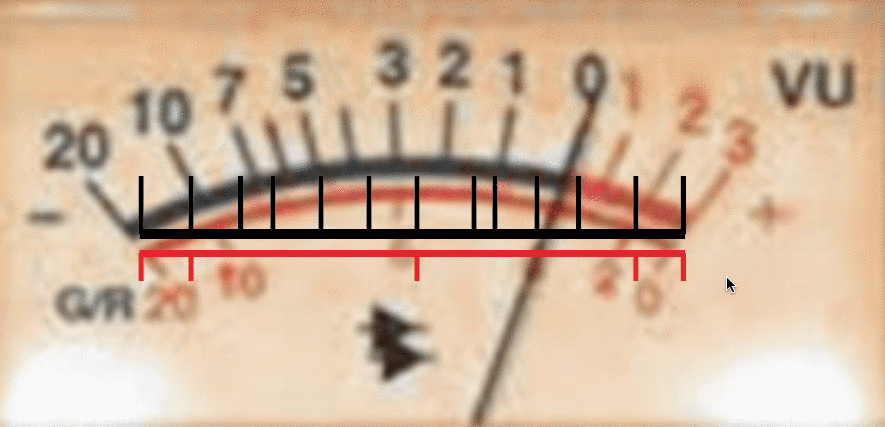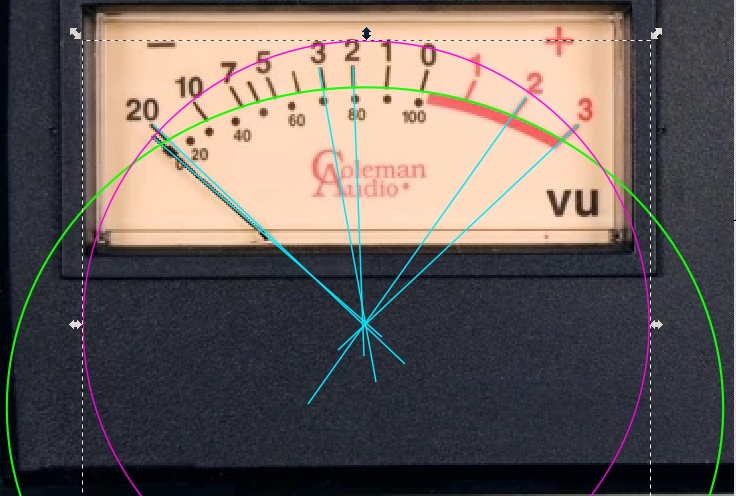I'm trying to create a VU meter in Illustrator. I've tried various methods but cannot achieve the result I like. (I tried blend tool method, and also warp Arch method as seen in my example attached.) I got a response from another Illustrator user, but I must admit it's a bit confusing. I'm stuck on the 1st step, which has to do with the transform pallet
- Place the original on a Template Layer at the largest possible size that can be easily scaled to the final size, and start on a new Layer above it, and work at a zoom level that allows precise fitting;
1) With the Line Segment Tool Click Drag between the ends of the visible part of the indicator, then in the Transform palette select the top right Reference Point and multiply the W or H value by a sufficient number (maybe 1.5) and press Ctrl/Cmd+Enter to extend past its centre of rotation;
With the Ellipse Tool create an ellipse that fits the upper scale nicely and has its centre on the line from 1);
Object>Path>Offset Path with a negative Offset that gives a fit on the lower scale; you may use Undo for just 3) or for both 2) and 3), depending on the accuracy of the original, to get the best overall fit (if any, I would weight the upper higher in this); copy all the marks and lock the originals;
Select the upper scale ellipse and Object>Path>Offset Path with a positive Offset to fit the upper ends of the upper marks, then Object>Path>Offset Path with a negative Offset to fit the lower ends of the lower marks
For the upper scale, with the Line Segment Tool ClickDrag from the upper end of each mark (at the upper ellipse) to the centre (of rotation/the ellipses), then extend beyond the upper ellipse as in 1) if needed (see below);
Repeat 4) only for the lower scale;
Increase the Stroke Weight of all parts to match the originals;
8 ) Cut all parts as desired, either
8a) Cut the upper/lower marks at the intersections with 2)/1) and the upper/lower end ellipse and hide/delete the unneeded parts, and also cut the scales, and extend the upper mark at 0 to reach the bottom of the upper scale; or
8b) Select all the parts and Object>Path>Outline Stroke and use the Pathfinder operations to cut;
Set the colour of all parts; cut the upper scale so it switches from black to red just to the right of the upper mark at 0;
Add the numbers, letters, and signs.
Thank you.







